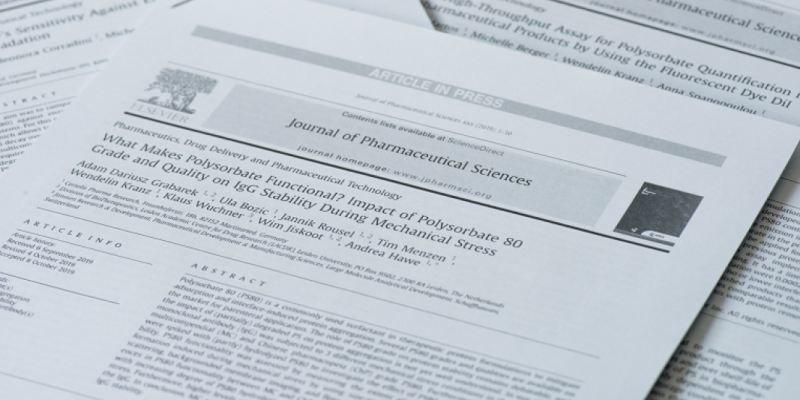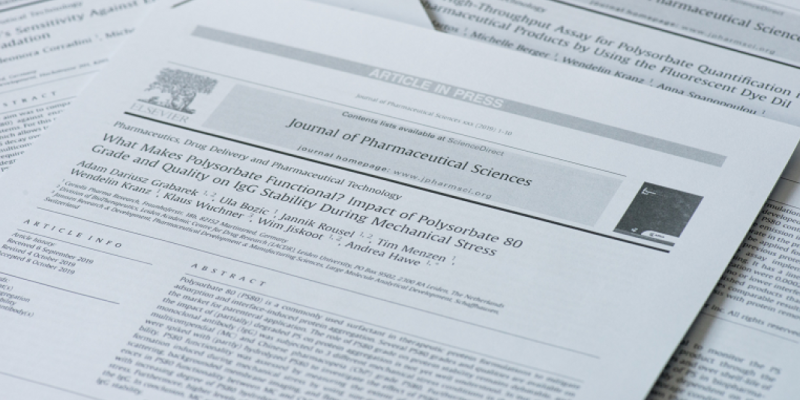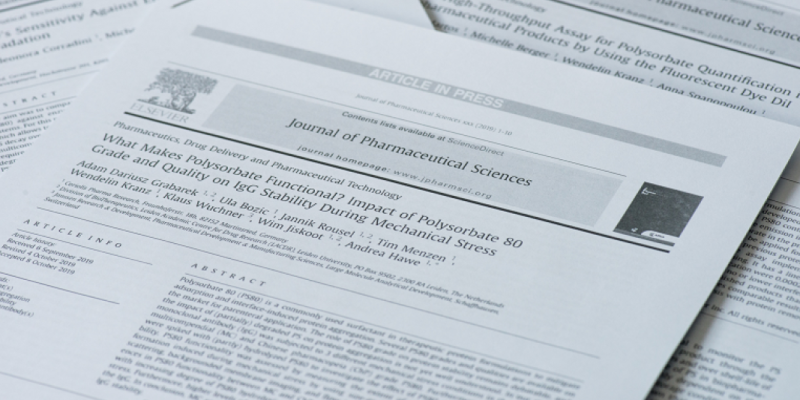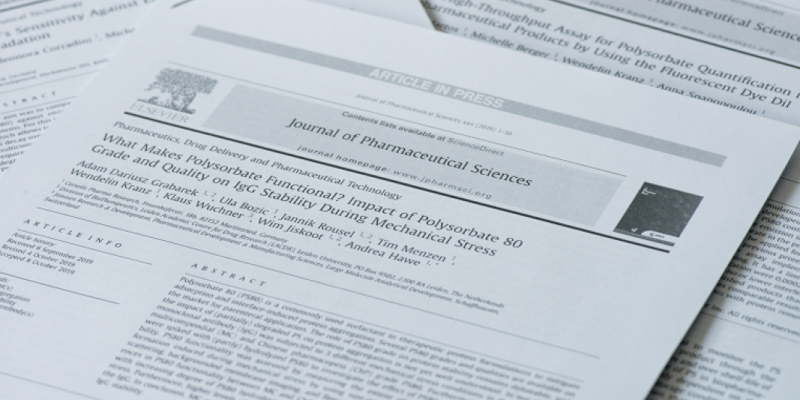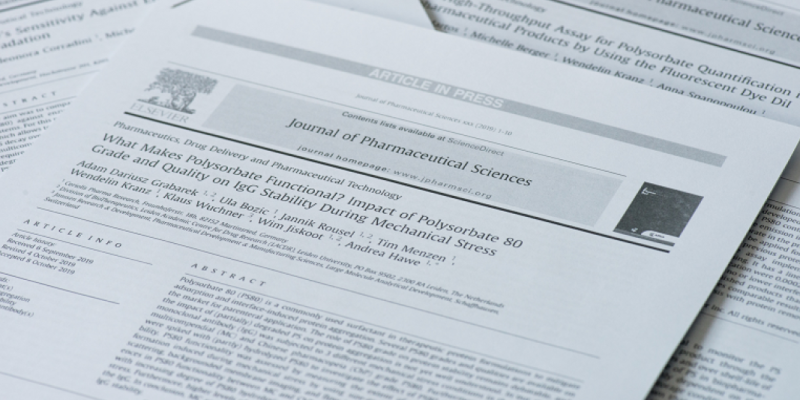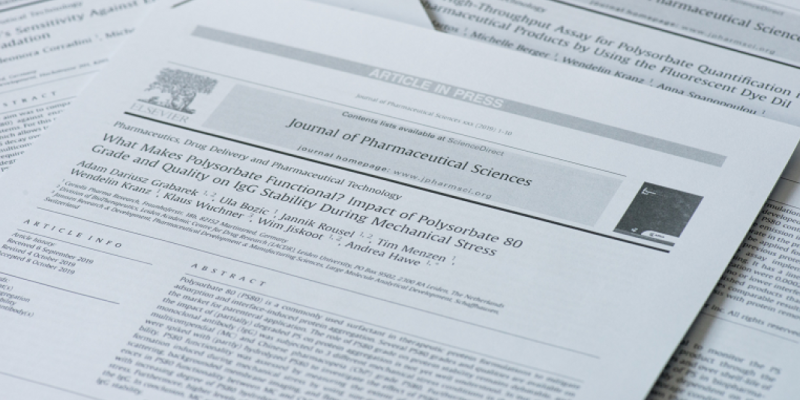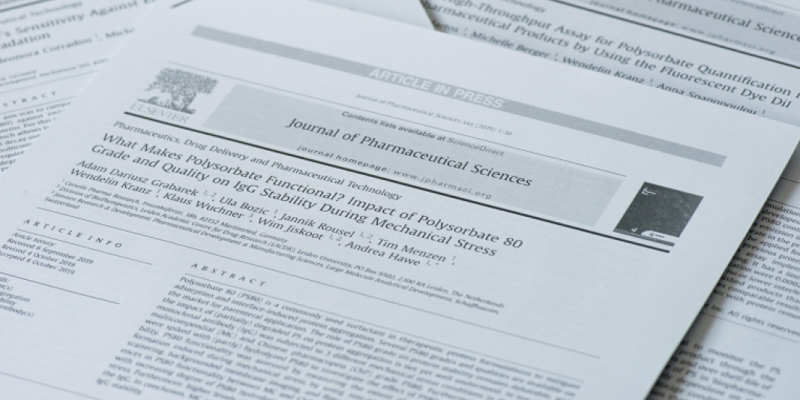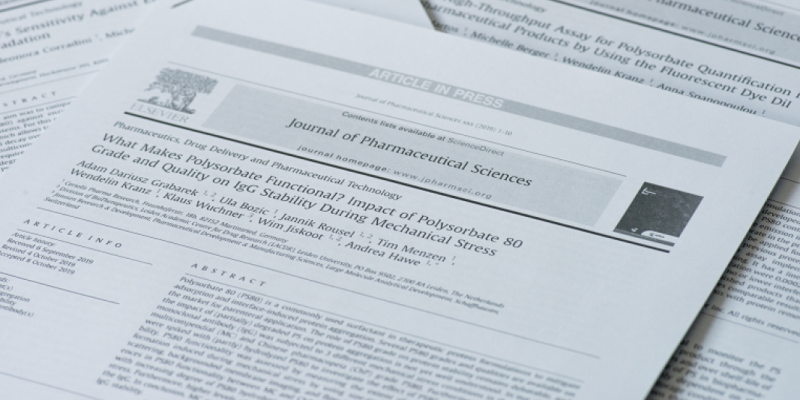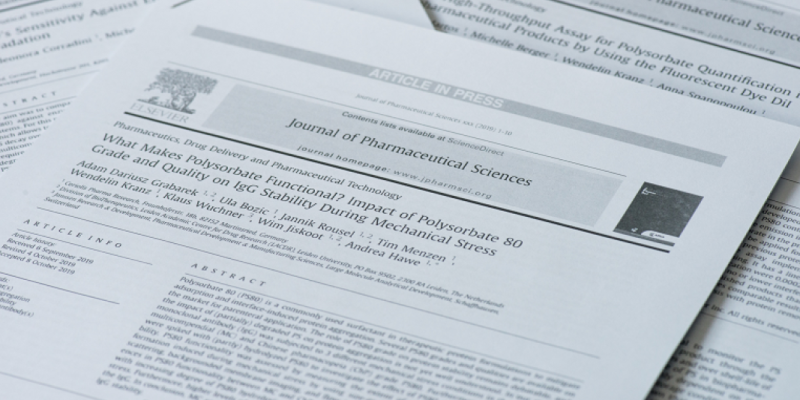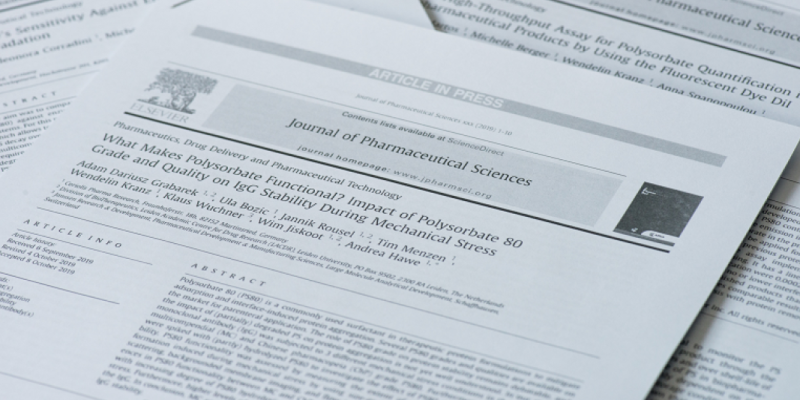Comparison of analytical methods to detect instability of etanercept during thermal stress testing.
Eur J Pharm Biopharm. 2011 Jun
The aim was comparing the capability of a set of analytical methods to detect physical instability (focus on aggregation and structural changes) of etanercept during thermal stress testing as early as possible. Pre-filled syringes of Enbrel® 50mg from three batches were thermally stressed for one week at 50°C. Samples were taken at days 0, 1, 2, 3, 4 and 7, and analyzed with high-performance liquid size exclusion chromatography (HP-SEC), SDS-PAGE gel electrophoresis, dynamic light scattering (DLS), light obscuration, extrinsic fluorescence (Bis-ANS), far-UV circular dichroism (CD) spectroscopy, second derivative UV spectroscopy (UV), and enzyme-linked immunosorbent assay (ELISA). Thermal stress resulted in the formation of small soluble aggregates (HP-SEC, DLS) which were in part covalent (SDS-PAGE), and conformationally changed (Bis-ANS, CD, UV). No significant increase in subvisible particles was detected by light obscuration. An apparent increase in TNF-α binding to etancercept in the stressed formulations was found by ELISA. The three batches were comparable when unstressed, but showed slight differences in aggregation tendency. Bis-ANS fluorescence was most sensitive with respect to early-stage detection of heat-induced instability of etanercept (significant changes already at day 1), followed by HP-SEC (day 2) and DLS (day 3). This points towards a degradation mechanism involving exposure of hydrophobic patches due to partial unfolding followed by aggregation.
Eur J Pharm Biopharm. 2011 Jun
https://www.sciencedirect.com/science/article/abs/pii/S0939641111000191?via%3Di…

